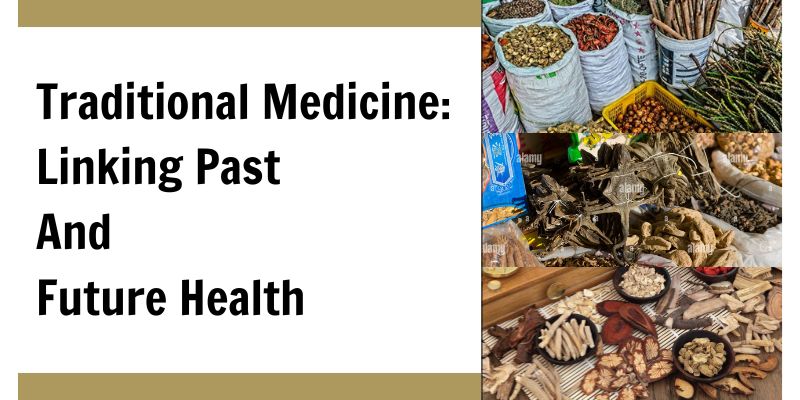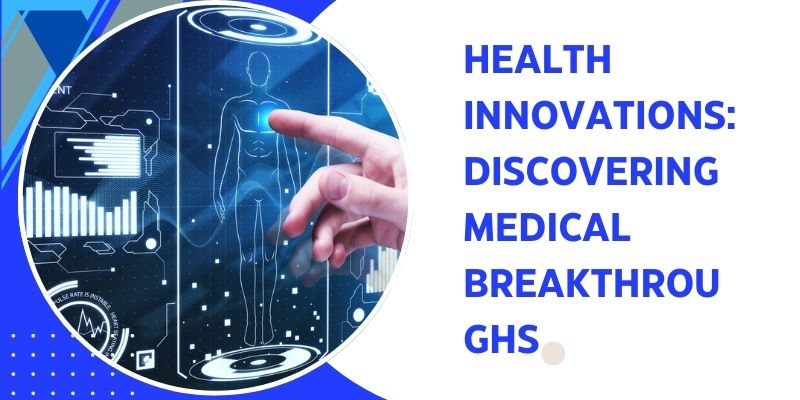Traditional medicine has a rich history, deeply rooted in various cultures around the globe. From the ancient practices of Ayurveda in India to Traditional Chinese Medicine (TCM), these time-tested methods offer valuable insights into health and well-being. As we venture into an era dominated by technological advancements, traditional medicine continues to play a pivotal role in health innovations.
The Essence of Traditional Medicine: Traditional medicine encompasses a variety of practices, including herbal medicine, acupuncture, and holistic therapies. These methods emphasize the balance between mind, body, and spirit, often focusing on prevention rather than just treatment. The core philosophy is to treat the individual as a whole, addressing the root cause of ailments rather than merely alleviating symptoms.
Herbal Medicine:
Herbal medicine is perhaps the most widely recognized form of traditional medicine. It utilizes plants and plant extracts to address various health conditions. For instance, the use of ginseng to boost energy and immunity, or the application of aloe vera for its soothing properties. Each culture has its unique set of medicinal plants and preparations, contributing to a diverse pharmacopeia.
Energy-Based Acupuncture Therapies
Acupuncture, a key component of TCM, involves inserting fine needles into specific points on the body to balance the body’s energy flow, or Qi. This practice is based on the belief that health is achieved by maintaining the body’s energy balance. Other forms of energy healing, such as Reiki and Qigong, also focus on harmonizing the body’s energy fields to promote health and well-being.
Holistic Therapies:
Holistic therapies consider the individual’s physical, emotional, and spiritual well-being. Techniques such as yoga, meditation, and massage therapy are integral to many traditional medicine systems. These practices not only help in disease prevention but also improve the quality of life by reducing stress and enhancing mental clarity.
Integration with Modern Medicine: The integration of traditional and modern medicine is paving the way for comprehensive healthcare solutions. Researchers and practitioners are increasingly recognizing the potential of combining age-old wisdom with cutting-edge technology. For instance, herbal remedies are being studied for their bioactive compounds, which could lead to the development of new pharmaceuticals. Acupuncture, once considered unconventional, is now gaining acceptance in pain management and rehabilitation therapies.
Evidence-Based Research:
Modern science is rigorously testing traditional remedies to understand their efficacy and safety. Clinical trials and pharmacological studies are being conducted to validate the therapeutic benefits of various traditional medicines. This evidence-based approach not only helps in integrating traditional practices into mainstream healthcare but also ensures that these treatments meet modern standards of safety and effectiveness.
Personalized Medicine:
One of the exciting prospects of integrating traditional and modern medicine is the potential for personalized healthcare. By understanding the genetic and molecular basis of diseases, scientists can tailor treatments that combine the best of both worlds. For example, pharmacogenomics, the study of how genes affect a person’s response to drugs, can be enhanced by incorporating traditional medicine’s individualized treatment approaches.
Innovative Approaches and Research: Recent advancements in biotechnology and pharmacology have opened new avenues for exploring traditional medicine. Genomic studies are being conducted to understand how traditional remedies interact with the human body on a molecular level. This fusion of traditional knowledge and modern science is leading to the discovery of novel treatments and preventive measures.
Bioprospecting:
Bioprospecting involves searching for plant and animal species that may have valuable medicinal properties. This practice has led to the discovery of numerous drugs derived from natural sources. For example, the anti-cancer medication Taxol comes from the Pacific yew tree. By exploring traditional medicine, researchers can uncover new bioactive compounds that have the potential to revolutionize healthcare.
Biotechnology Applications:
Biotechnology is playing a crucial role in advancing traditional medicine. Techniques such as genetic engineering, tissue culture, and bioinformatics are being used to enhance the production and efficacy of traditional remedies. For example, genetically modified plants can be developed to produce higher yields of medicinal compounds, ensuring a sustainable supply of these valuable resources.
Case Studies and Success Stories: Several success stories highlight the efficacy of traditional medicine in contemporary healthcare. For example, Artemisinin, derived from sweet wormwood, has become a cornerstone in the treatment of malaria. Similarly, the anti-inflammatory properties of turmeric have garnered attention in managing chronic diseases.
Ancient Medicine in Contemporary Healthcare
Traditional medicine is not just confined to developing countries; it is increasingly being integrated into modern healthcare systems worldwide. Hospitals and clinics in countries like the United States and Europe are now offering complementary and alternative medicine services, including acupuncture, herbal medicine, and holistic therapies. This trend reflects a growing recognition of the value of traditional medicine in promoting health and well-being.
Cultural Impact:
Traditional medicine also plays a vital role in preserving cultural heritage. By practicing and promoting traditional medicine, communities can maintain their unique cultural identities and pass on valuable knowledge to future generations. This cultural continuity is essential for the survival of traditional medicine systems and their continued contribution to global health.
Challenges and Future Prospects: While traditional medicine offers numerous benefits, it also faces challenges such as standardization, quality control, and scientific validation. The future of traditional medicine lies in rigorous research, sustainable practices, and global collaboration. By addressing these challenges, we can ensure that traditional medicine continues to contribute to health innovations.
Regulatory Frameworks:
Establishing robust regulatory frameworks is crucial for the safe and effective use of traditional medicine. Governments and health organizations must work together to develop guidelines for the quality, safety, and efficacy of traditional remedies. This includes standardizing dosages, ensuring the purity of ingredients, and monitoring adverse effects.
Global Collaboration:
Global collaboration is essential for advancing traditional medicine. Researchers, practitioners, and policymakers from different countries need to share knowledge, resources, and expertise to overcome common challenges. International conferences, research partnerships, and cross-cultural exchanges can foster a global network dedicated to promoting the integration of traditional and modern medicine.
Conclusion
Traditional medicine is more than just a relic of the past; it is a living, evolving practice that holds immense potential for the future of healthcare. By embracing both traditional and modern approaches, we can create a more holistic and effective health system. The synergy between ancient wisdom and modern science promises a brighter, healthier future for all.

